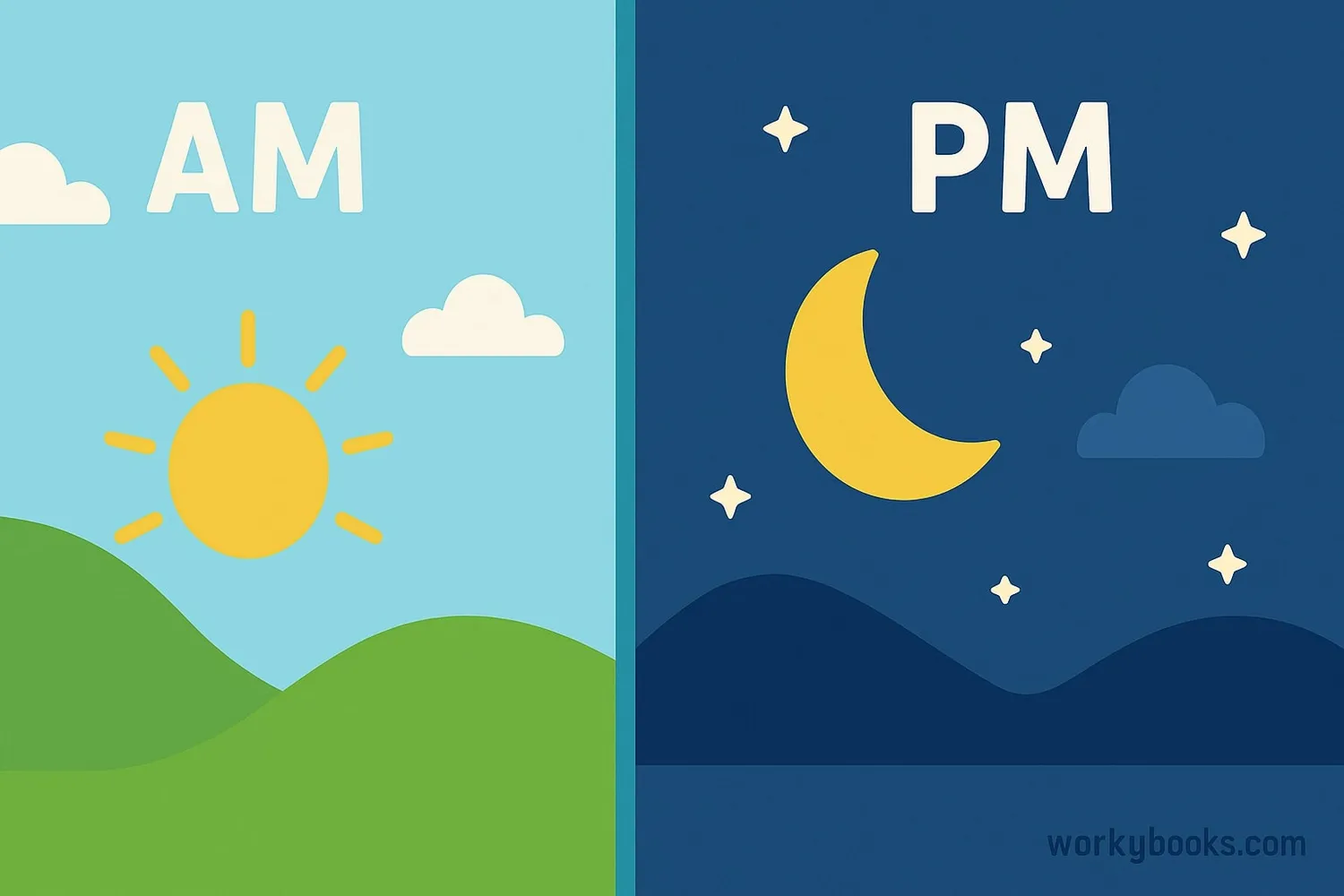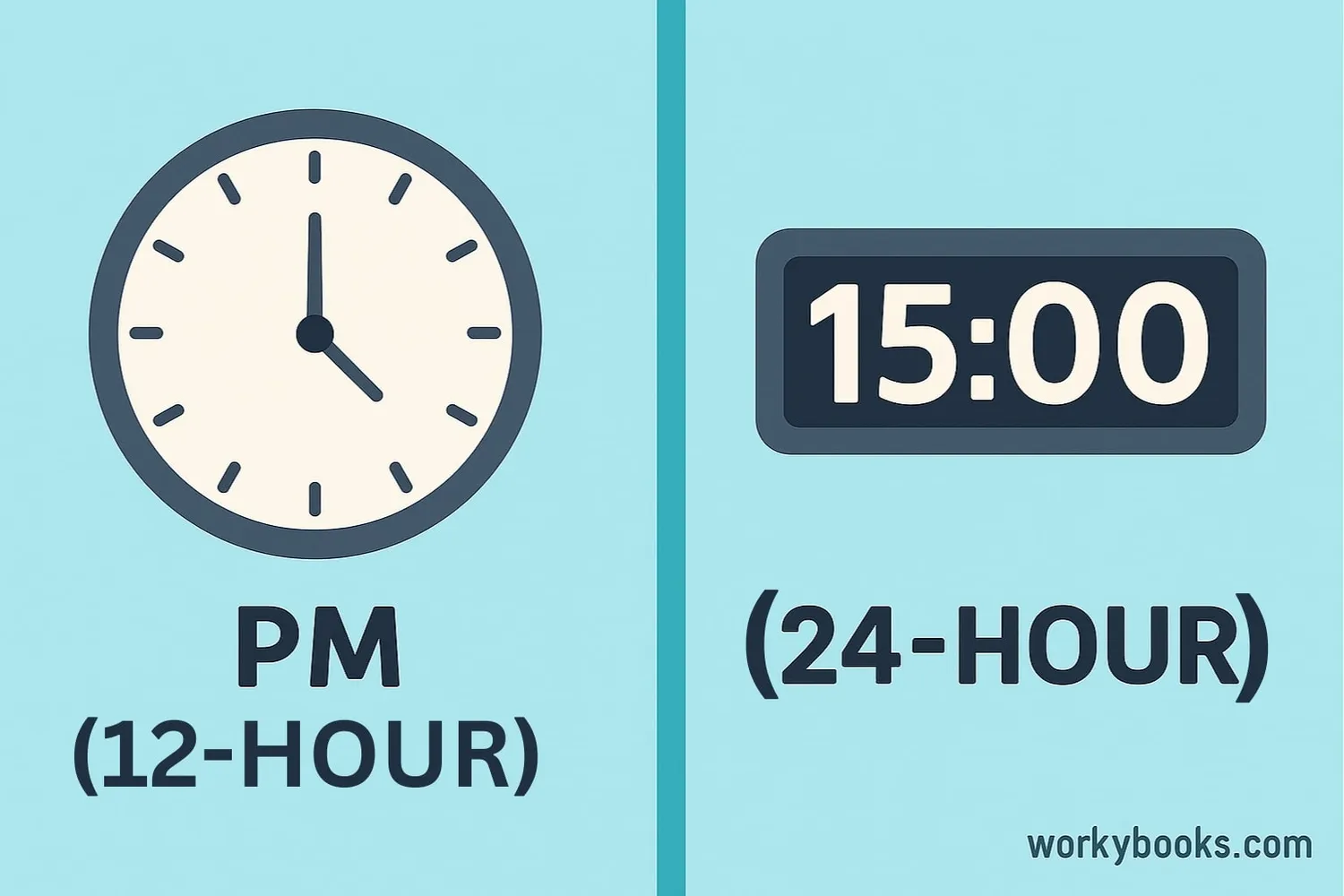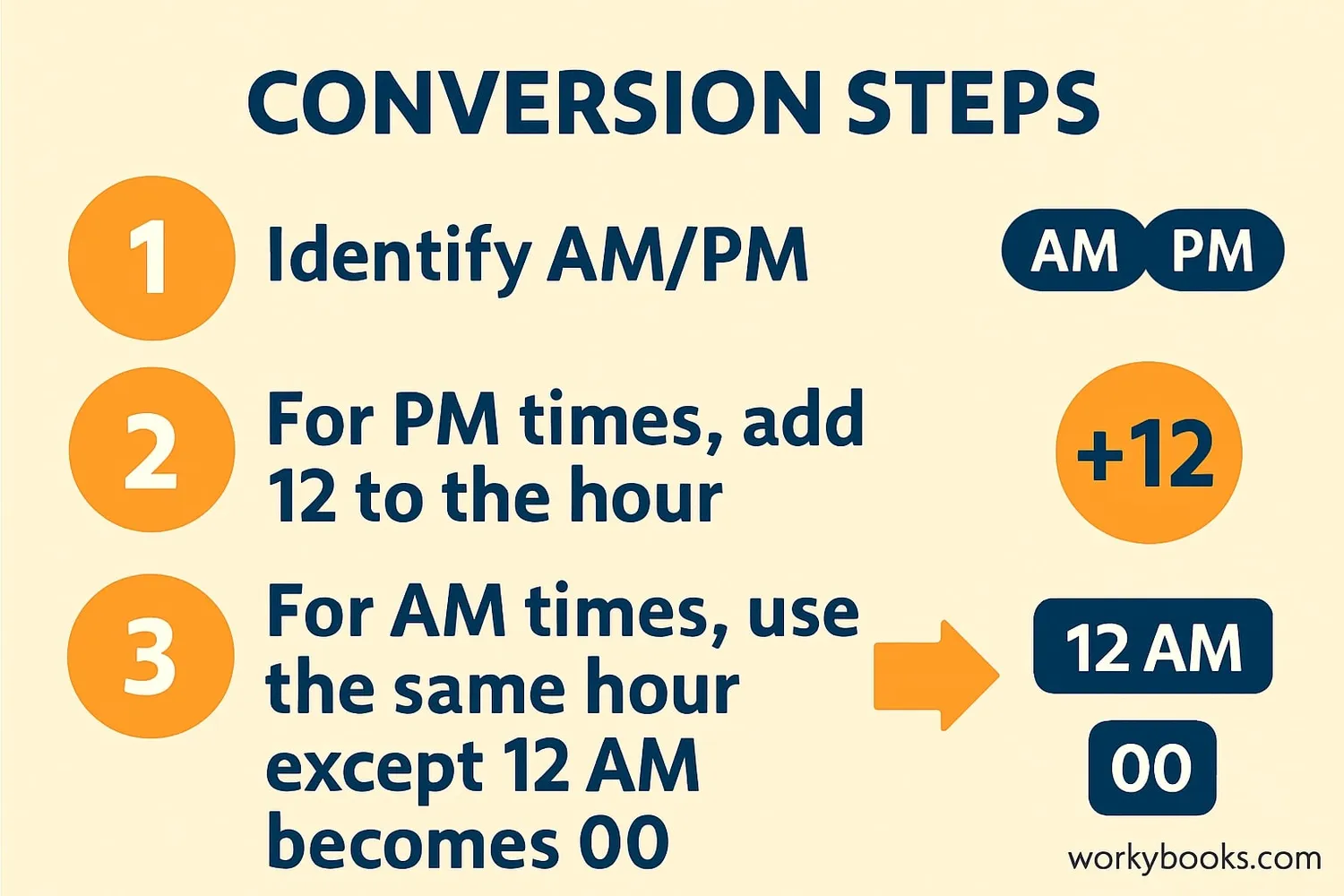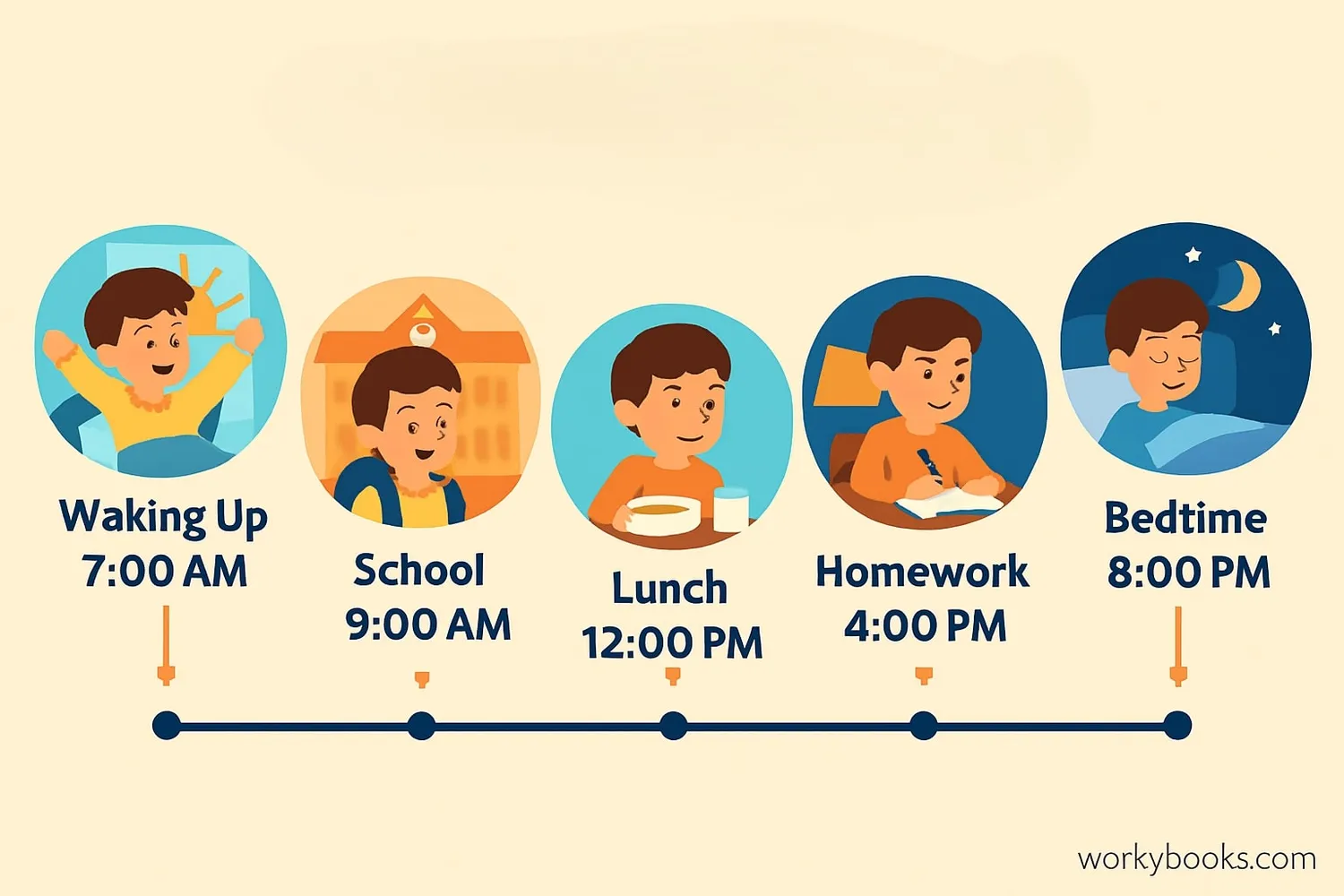AM and PM - Definition, Examples, Quiz, FAQ, Trivia
Learn to tell time with the 12-hour clock system and master AM/PM concepts
What is AM and PM?

AM and PM are abbreviations that help us tell whether it's morning or afternoon/evening when using a 12-hour clock.
AM stands for "Ante Meridiem" which is Latin for "before midday". This means times from midnight to just before noon are AM times.
PM stands for "Post Meridiem" which means "after midday" in Latin. This covers times from noon to just before midnight.
Here's an easy way to remember:
- AM = After Midnight
- PM = Past Midday
AM Times
12:00 AM - 11:59 AM
Examples: 7:00 AM (breakfast), 10:30 AM (school time)
PM Times
12:00 PM - 11:59 PM
Examples: 3:00 PM (playtime), 8:30 PM (bedtime)
Key Concept
Noon (12:00) is PM and midnight (12:00) is AM. Remember: 12:00 PM is lunchtime and 12:00 AM is the middle of the night!
The 12-Hour Clock System

The 12-hour clock is the most common way to tell time in everyday life. Here's how it works:
1. The day is divided into two 12-hour periods:
- AM: Midnight (12:00) to just before noon (11:59)
- PM: Noon (12:00) to just before midnight (11:59)
There are two 1 o'clocks, two 2 o'clocks, etc. - one in AM and one in PM.
3. We use AM/PM to clarify:
Saying "3:00" could mean morning or afternoon, so we add "AM" or "PM" to be clear.
Special Times to Remember
12:00 AM
Midnight - the start of a new day
12:00 PM
Noon - the middle of the day
3:00 AM
Very early morning
3:00 PM
Afternoon
Remember
When the hour is 12, we say "twelve" not "zero". 12:30 AM is half past midnight, and 12:30 PM is half past noon.
Converting Between 12-Hour and 24-Hour Time

Some clocks and countries use a 24-hour format. Here's how to convert between 12-hour (AM/PM) and 24-hour time:
Converting PM to 24-hour time:
- For times from 1:00 PM to 11:59 PM, add 12 to the hour
- Example: 3:00 PM → 3 + 12 = 15:00
- For times from 12:00 AM to 12:59 AM, the hour is 00
- For times from 1:00 AM to 11:59 AM, keep the same hour
- Example: 8:30 AM → 08:30 (or just 8:30 in 24-hour format)
Conversion Chart
| 12-Hour Time | 24-Hour Time |
|---|---|
| 12:00 AM (midnight) | 00:00 |
| 1:00 AM | 01:00 |
| 6:30 AM | 06:30 |
| 12:00 PM (noon) | 12:00 |
| 1:00 PM | 13:00 |
| 3:45 PM | 15:45 |
| 8:00 PM | 20:00 |
| 11:59 PM | 23:59 |
Conversion Tip
For PM times, just remember: 1 PM is 13, 2 PM is 14, and so on up to 11 PM is 23. It's like counting past 12!
Real-World Examples

Let's look at some everyday activities and their typical times:
- 7:00 AM: Wake up and get ready for school
- 8:30 AM: School starts
- 12:00 PM: Lunchtime at school
- 3:30 PM: School ends and playtime begins
- 6:00 PM: Dinner with family
- 8:00 PM: Bedtime routine starts
- 9:00 PM: Lights out and sleep
Example 1:
Your soccer practice starts at 4:30 PM. What time is this in 24-hour format?
Solution: 4:30 PM → 4 + 12 = 16:30
Example 2:
A movie starts at 19:00. What time is this in AM/PM?
Solution: 19:00 → 19 - 12 = 7:00 PM
Example 3:
You wake up at 7:00 AM. What time is this in 24-hour format?
Solution: Since it's AM, it stays 07:00
Example 4:
A flight departs at 06:45. Is this AM or PM?
Solution: Since 06:45 is before 12:00, it's 6:45 AM
Practice Tip
Look at digital clocks around you - on phones, microwaves, or computers. Notice when they use AM/PM and when they use 24-hour time!
AM/PM Practice Quiz
Test your time-telling skills with this 5-question quiz. Choose the correct answer for each question.
Frequently Asked Questions
Here are answers to common questions about AM and PM:
Time Trivia
Discover interesting facts about time and clocks:
Origin of AM/PM
The AM/PM system dates back to ancient Rome where the day was divided into two 12-hour periods. The terms "Ante Meridiem" and "Post Meridiem" are Latin phrases meaning "before midday" and "after midday".
Time Zones
There are 24 time zones around the world, one for each hour of the day. When it's 12:00 PM in New York, it's already 5:00 PM in London and 1:00 AM the next day in Tokyo!
Digital Clocks
The first digital clock was invented in 1956, but it wasn't until the 1970s that digital clocks became common in homes. Before that, all clocks were analog with hour and minute hands.
Daylight Saving Time
Daylight Saving Time was first proposed by Benjamin Franklin in 1784, but it wasn't widely adopted until World War I. Today, about 70 countries use some form of Daylight Saving Time.


